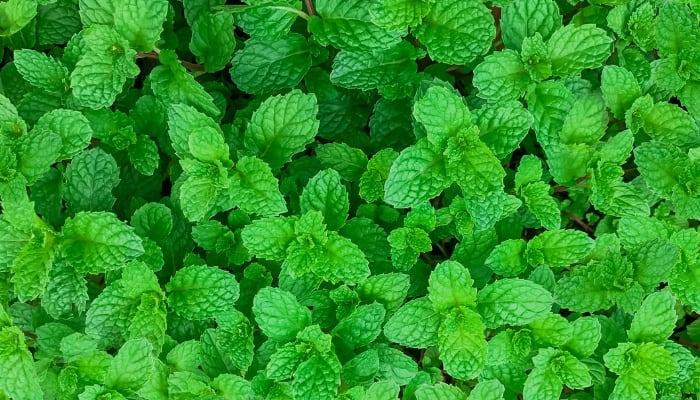Is it possible to mistake the appearance and aroma of this refreshing herb?
Mint plants in the Mentha genus have a unique quality loved by gardeners, chefs, and herbologists the world over, but there are quite a few mint look-alikes (and even some smell-alikes) out there to trip you up!
Indicators of a genuine mint plant are the square stem and oblong, tapering leaves with a prominent vein detail or puckered texture and toothed edges.
Rubbing mint leaves between your fingers should also leave an oily residue and trigger that distinctive mint fragrance.
Let’s take a look at 16 plants that are often mistaken for mint species and the characteristics that tell them apart…
1. Lemon Balm
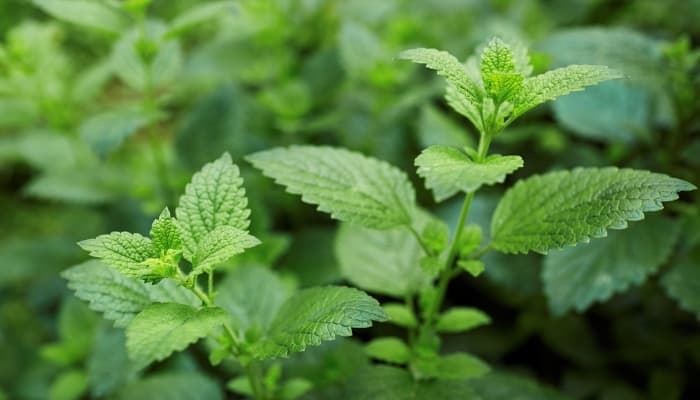
Lemon balm grows up to 3 feet tall compared to the 1-2-foot tall mint, but the bright green, jagged-edged leaves and opposite leaf pairings can easily fool you.
There are quite a few differences to work with though. Whereas mint leaves have a slightly dulled matte texture, lemon balm has a noticeably glossier surface.
Lemon balm leaves can also be slightly more on the heart-shaped side as opposed to oblong. Oh, and lemon balm also gives off a lemony aroma of course!
2. Stinging Nettle
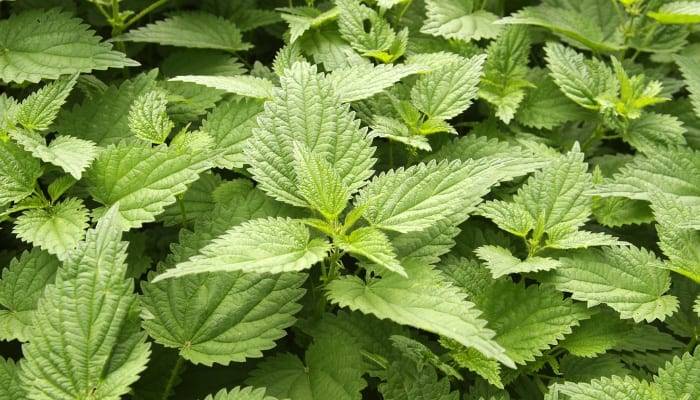
Stinging nettle, an invasive perennial, has lush green leaves that are lance-shaped with deeply saw-toothed edges. Large leaves grow in opposite pairings.
On closer inspection though (but not too close!), this barbed plant is covered from stem base to leaf tip in tiny, bristly hairs that cause instant irritation when touched.
The scent of mint, or any scent, is also completely lacking here.
3. Hemp Nettle

Depending on the variety, mint plants run the gamut from light chartreuse green to grayish or dark green, and hemp nettle is cleverly disguised as the latter.
This plant carries the same tapered oval leaves with softly jagged edges and a dull matte surface embossed with vein detail.
A helpful tell is in its flowers though. Hemp nettle produces individual variegated white, pink, or purple flowers while mint has clustered spikes of pale purple, pink, or white blooms.
4. Dead Nettle

Opposite leaf pairings? Check. Pronounced veins? Check. Dull, matte leaf texture? Check. At first glance, dead nettle is a dead ringer for mint.
However, some varieties of dead nettle feature deep purplish or burgundy-red leaves that fade out in saturation from the center, and as this plant matures, large purple or white orchid-like flowers with upper and lower lips appear beside the leaves.
5. Small-Flowered Melissa

A cousin of the lemon balm plant, small-flowered Melissa (Melissa axillaris) has delicate jagged-edged light-green leaves and embossed texture, which is easily confused for peppermint unless you release its distinct lemony scent when brushing past.
However, this copycat often grows to only 12 inches high on average and features small yellow and white flowers.
6. Catnip

Sturdy stems and highly textured leaves that range from medium to dark and grayish-green have catnip looking like the real deal.
Confusingly, it also contains the wonderfully effective natural insect-repellent nepetalactone oil, which smells like mint.
A helpful tell is that catnip produces pink flowers with purple spots. Also, when in doubt, you can always see whether your cat takes an interest or not!
7. Henbit
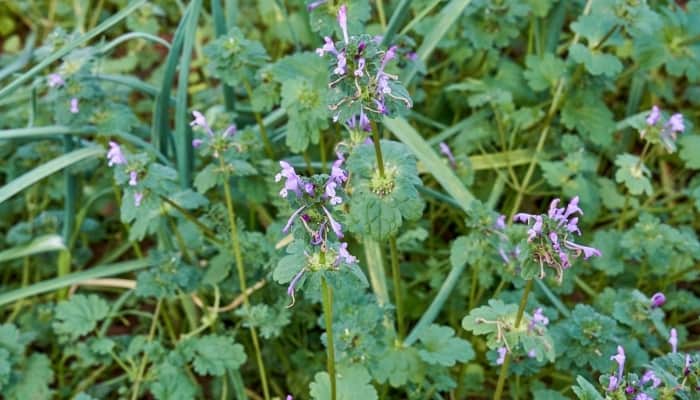
Up close, henbit shares the same square stems, toothed edges to its leaves, and clear vein detail of mint plants.
However, this woody, low-to-the-ground shrub has a different growth habit compared to mint’s erect, branching stems.
Henbit stems are noticeably thicker too, and its leaves are more egg-shaped, lacking the tapered point of the mint leaf.
8. Creeping Charlie
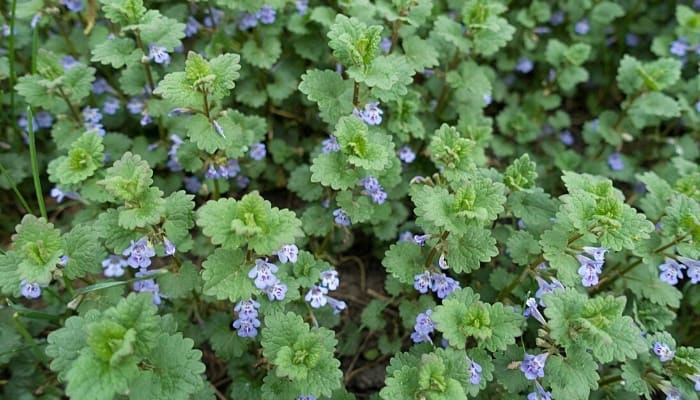
To the untrained eye, the emerald-green leaves and square leaf formation of opposite leaf pairs make creeping Charlie appear very similar to its minty counterpart. It even has a square stem structure.
However, the pointed, lance-shaped leaves and saw-toothed margins are nowhere to be found here. Creeping Charlie has wide kidney-shaped leaves with soft scalloped edges.
Also, as its name suggests, this is a dense matt-forming herb, lacking the strong erect habit of mint.
9. Hyssop
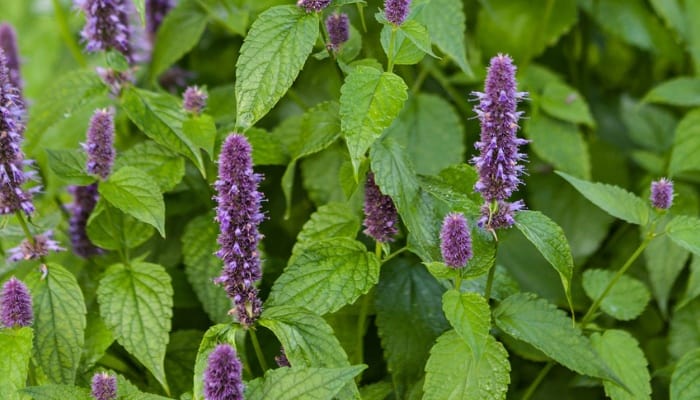
Like mint, hyssop is edible and sends out flower spikes that can be purple, pink, or white. It also has dark green elliptical leaves that grow in pairs along the stem although these are much more narrow.
Hyssop also grows to a similar height as mint. Unlike mint, its flower spikes tend to be taller and more prominent with some varieties featuring deep violet-blue flowers.
10. Perilla Mint

Despite the name and being part of the mint family (but not the genus Mentha), perilla mint is far from the common mint variety we know and love. It’s poisonous to livestock and is considered a weed.
Sneakily though, perilla mint will release a peppermint aroma when crushed and displays similar oval-shaped leaves with fine-toothed margins.
A big indicator of perilla mint though is that the stems and leaves have a distinct purple tinge.
11. Jamaican Mint
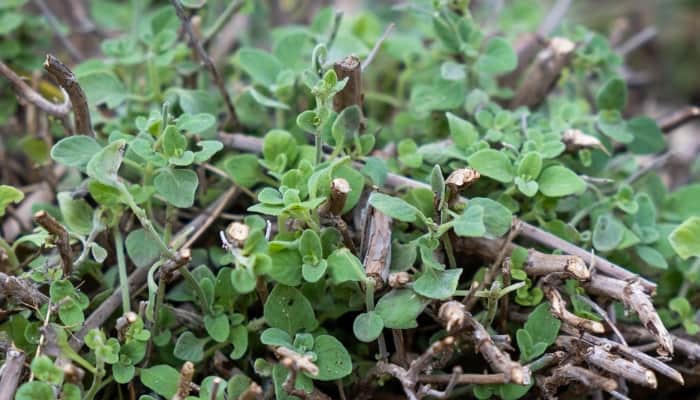
Though it isn’t a true mint, this tropical herb (Micromeria viminea) emits a spicy, peppermint-like scent and has minty-flavored leaves that are well-loved in herbal teas and used to flavor Caribbean dishes.
While Jamaican mint (sometimes called Jamaican peppermint) has oblong bright green leaves in opposite pairs, a giveaway is that the almost glossy leaves and smooth rounded edges resemble basil leaves more than they do mint!
12. Bush Mint

Another tropical variety, this shrub is native to Costa Rica but also grows wild in Jamaica, earning the name “Jamaican mint tree” and emitting a strong peppermint scent.
Not to be confused with Jamaican mint (or original mint), bush mint (Satureja viminea) has a dense, bushy growth that can reach up to 8 feet tall.
It produces tiny medium-green leaves that grow in tight clusters on branches that almost resemble green flower spikes from afar (but they aren’t flowers).
13. Korean Mint

Looking part lavender and part mint, the Korean mint plant is named for its sweet peppermint taste.
It produces chunky lilac flower spikes that stand tall above leaves that appear very mint-like: dull green, puckered, and with toothed edges.
The grand flowers on Korean mint can help distinguish it from true mint.
While some mint varieties have flower spikes, mint flowers are far more sparse and won’t resemble thick tubular lavender-like clusters that are on show here.
14. Hairy Mountain Mint
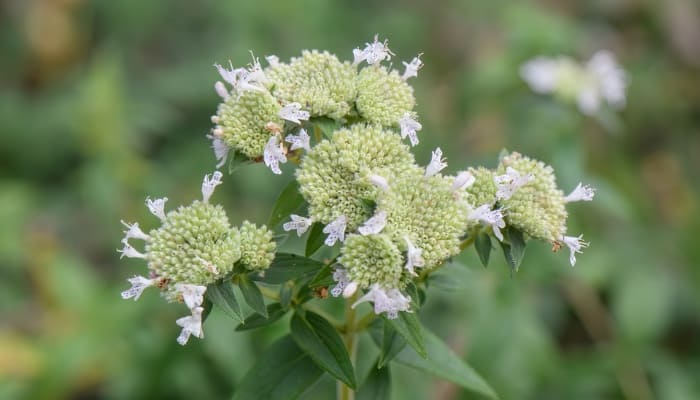
Some mint varieties are grayish-green with a fuzzy halo, so you can be forgiven for mistaking this herb for the real thing.
Hairy mountain mint (Pycnanthemum pilosum) also has square stems and opposite leaf pairings that grow smaller as they ascend.
However, a telltale sign is its thick and long, narrow leaves with smooth toothless edges that bear a closer resemblance to sage or lamb’s ears.
Another clear indicator is the blooms that decorate the top-most stems with dense rounded flower heads that look a little like mini cauliflowers!
15. Verbena
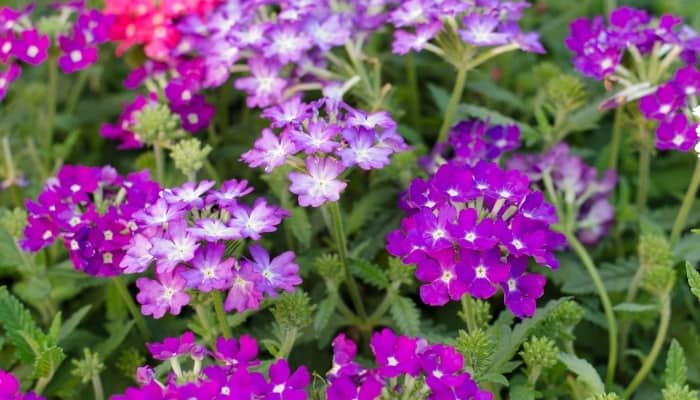
The square stems and opposite leaf formations on this plant come close to appearing mint-like.
Verbena leaves can also either be lobed or toothed. However, the overall habit and structure give the game away.
While mint foliage is often fairly dense, verbena leaves are dotted sparsely along the very thin and tall stalks (which can grow close to 5 feet).
Also, the flowers at the top of each steam, though dainty and purple, are arranged in flat-top little bouquets instead of spikes or individual blooms.
16. Self-Heal
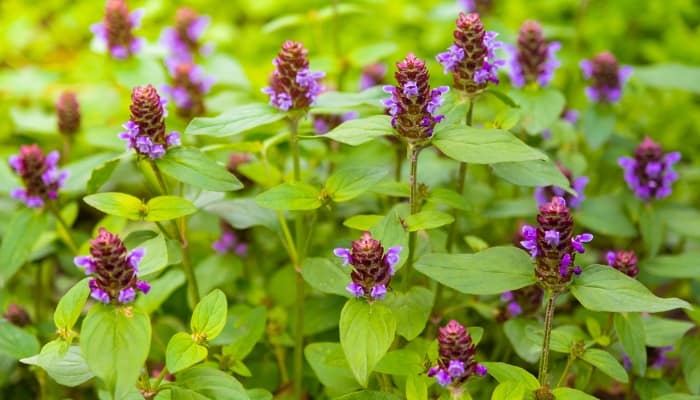
Also nicknamed “all-heal” for its various medicinal uses and quite wonderfully “heart of the earth,” this mint look-alike grows to a similar height and features matte dull-green leaves with short stubby flower spikes of purple, pink, or white flowers.
Self-heal (Prunella vulgaris) also has lance-shaped leaves but with subtly serrated edges, and the plant carries no discernable scent — mint or otherwise.
There You Have It — 16 Plants That Look Like Mint
So, there are quite a few mint look-alikes out there with many even emitting the same distinct minty fragrance.
As we’ve learned though, there are some subtle ways to tell them apart with some revealing bigger clues than others, from different leaf colorings and flower shapes to ones that release no scent at all.
We hope you’ve found the above information helpful for your herb garden planning or next foraging adventure!

